PCMark 10
We ran two benchmarks using PCMark 10: the Full System Drive Benchmark as well as the Data Drive Benchmark.
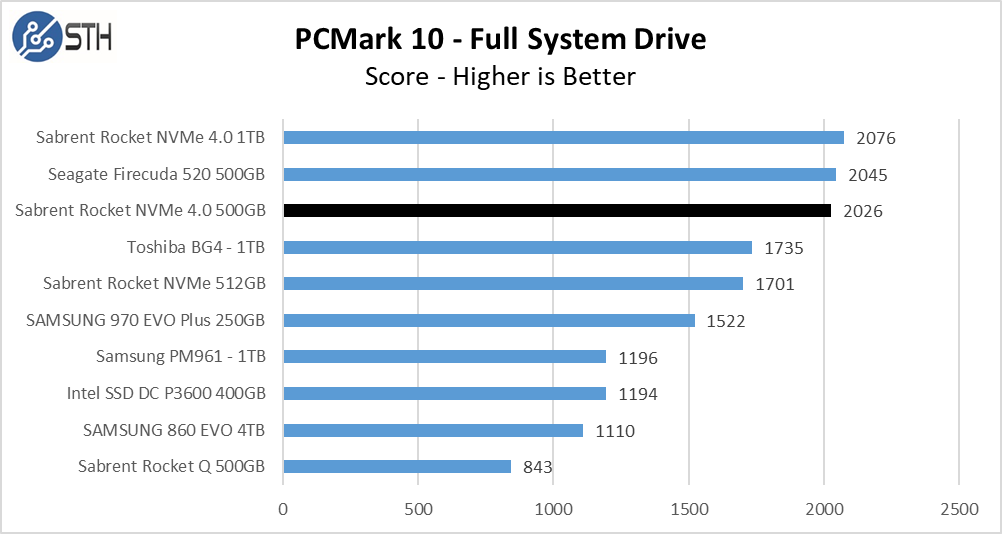
The Rocket NVMe 4.0 500GB again performs well, besting the PCIe 3.0 drives we have tested.
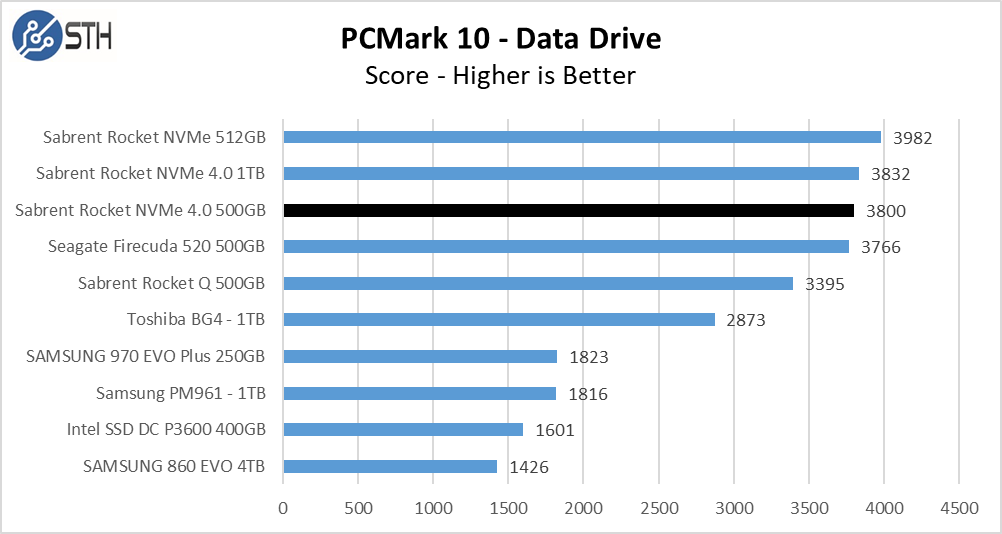
For the Data Drive benchmark, the whole suite of Sabrent drives do well. All of the Phison based SSDs do well in this benchmark, even the PCIe 3.0 ones, indicating that they play nicely with the workload in this particular test.
SPECworkstation 3.0.2 Storage Benchmark
SPECworstation benchmark is an excellent benchmark to test systems using workstation type workloads. In this test, we only ran the Storage component, which is 15 separate tests.
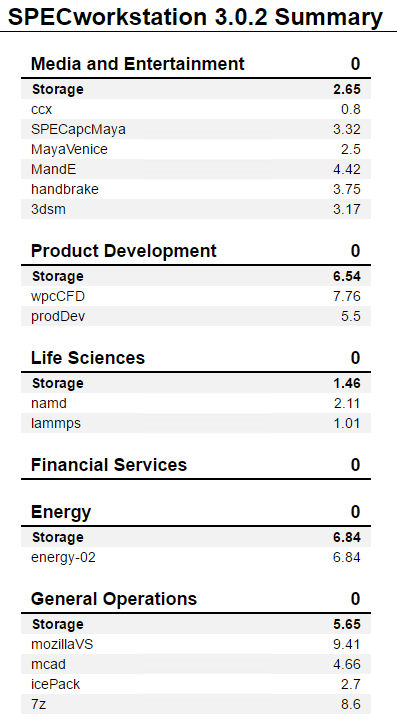
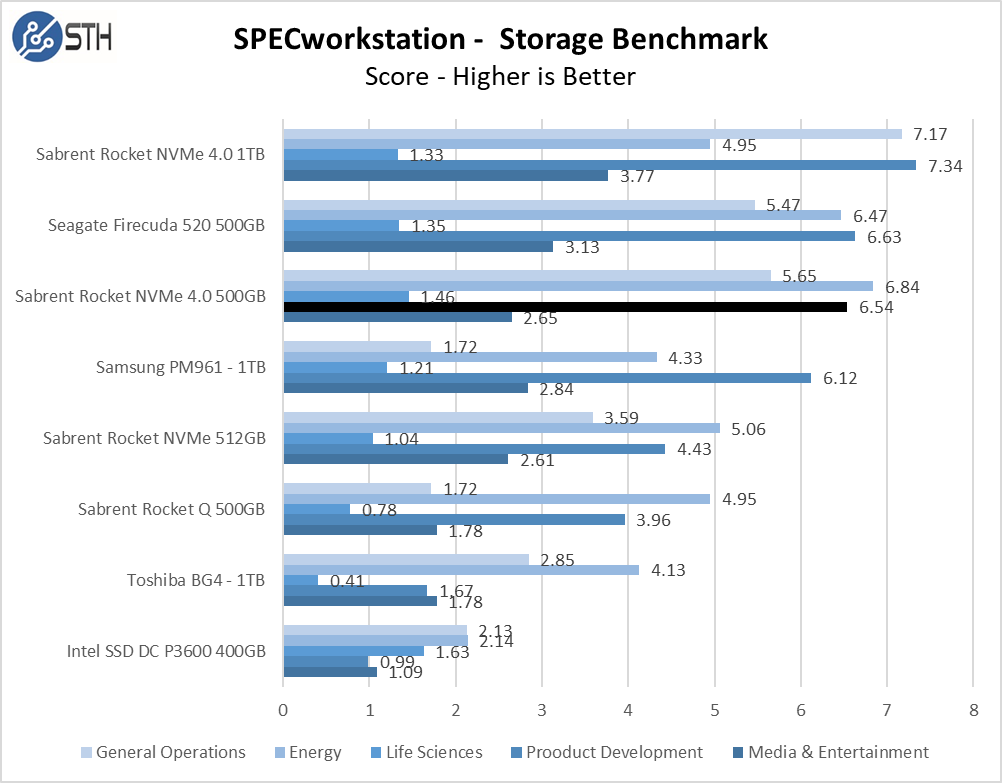
The Rocket NVMe 4.0 500GB finishes strong, trading blows with the Firecuda once again. The larger capacity Sabrent Rocket 4.0 1TB drive continues to top the chart, which is to be expected given its faster write specifications.
Temperatures
We monitored the idle and maximum temperature during testing with HWMonitor to get some idea of the thermal performance and requirements of the drive. Please keep in mind that our test bench is an open frame chassis in a 22C room, and is thus not representative of a cramped low-airflow case.

As mentioned in the overview, all our benchmarks were taken with the heatsink on, and saw peak temperatures of 55C which is very good. Just for science, we removed the heatsink and put some load to the drive and temperatures very quickly spiked over 70C, proving that the heatsink is both effective and necessary when running under load at PCIe 4.0 speeds.
We should mention that many modern motherboards have thermal solutions built-in to handle these higher power and TDP drives and we are not testing those here. They also may render the Sabrent heatsink unnecessary or unusable since one can only use a single thermal solution.
Final Words
The Sabrent Rocket NVMe 4.0 500GB is a premium PCIe 4.0 SSD that retails for around $120, or $130 with the heatsink. The Rocket NVMe 4.0 500GB read performance was good for a PCIe 4.0 SSD, but if truly high performance write speeds are needed then a larger capacity drive should be considered for the performance benefits. As it stands, the Rocket would be appropriate for use as a workstation drive, server boot volume, or SSD read cache drive for a storage array or NAS device, especially with the relatively high write endurance.
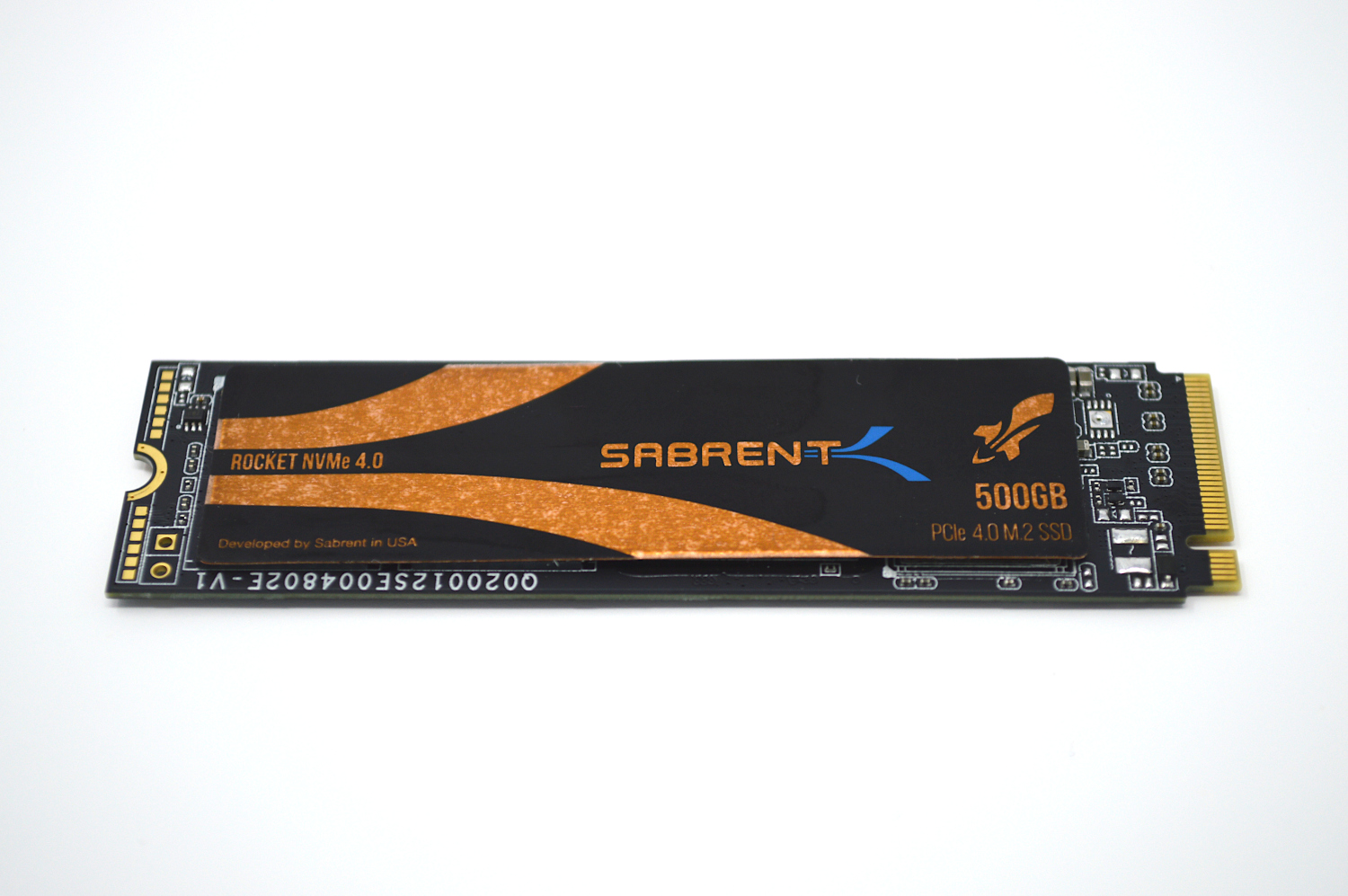
Overall the Rocket NVMe 4.0 500GB left a good impression. Eventually, PCIe 4.0 drives will improve in performance overall, since 5000MB/s is not the maximum speed of the interface, as well as improve on a per-channel basis allowing for better performance out of the lower capacity drives. For now, on the lower capacity drives the performance is all in the read characteristics, and if that is where you need performance then the Rocket NVMe 4.0 will serve you well.




Testing somethig like pci 4.0 device without testing latency is pointless.
I have to admit, i never really look at the review score, and normally look at the “Conclusion”/”Final words” section to get a first impression of how a product fared in the review. So, it is kinda weird that i just only now saw that there is a Design&Aesthetics ranking, which baffles me to no end.
To make it clear, this is sort of a short rant not specifically about this SSD here nor Will’s great work.
As everybody can probably tell by now, I am not really a fan of Design&Aesthetics ranking, and how much it seems to contribute to the final score. I know, numerical scoring in reviews is debatable anyway. But hey, there is the numerical scoring right here, so…
Rating functional aspects of a product using some scalar value can make sense, as often there can be a set of criteria/checkboxes (a metric) defined, with the scalar value being some kind of aggregate representation of how many of those criteria were met to which degrees.
But what does that Design&Aesthetics value mean, and what is it based on? Isn’t aesthetics based on a subjective evaluation of appearance? Is Design&Aesthetics value here based on some statistical model of how aesthetically pleasing a product would be to a group of statistically average humans, or is it just representing the perceived rise in body temperature when the reviewer fondly looked at the product?
Now that i have become aware of the Design&Aesthetics ranking, it has become an irresistable mystery to me. Please help me!
I can just agree with Dr. Manhattan here, though I have wondered for long what the design rating is for but without ever asking the question “out loud”.
Could anyone on the STH team give some insight into this, or much rather, give a deep dive about how the scoring is done in general?
Guys, I agree that the Design and Aesthetics is less impactful on a M.2 SSD review. Will was asking me about this as well. We need to keep it in otherwise the back-end database gets unhappy since other reviews have it.
We have gone over scoring a few times in comments already. As always, feel free to read the review for a deep-dive into what is driving the summarized view. We focus a lot more on the depth as one can see.